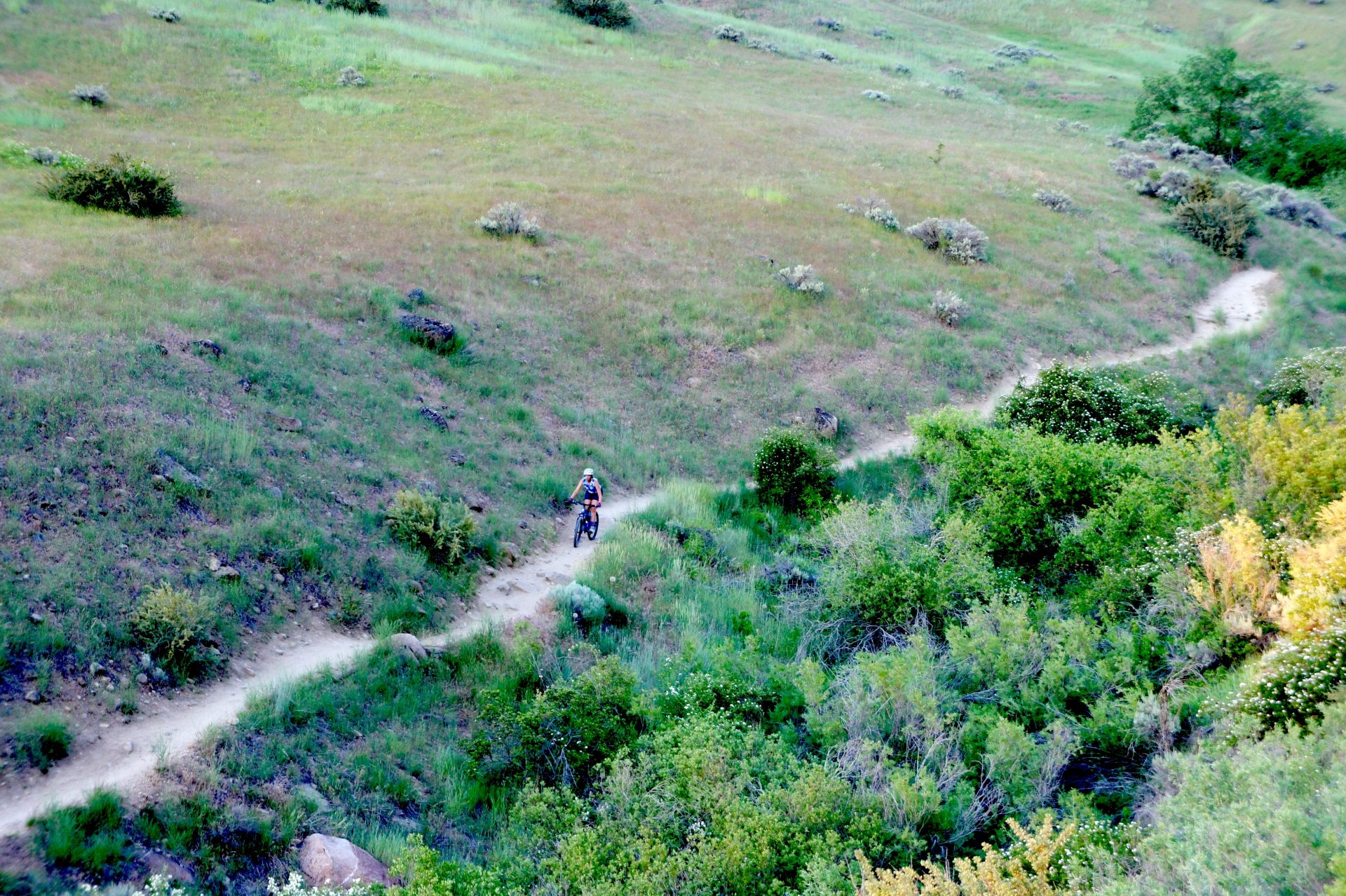
It’s around 6 in the evening. The sun is just showing signs of starting to drop in the sky but is still beaming down an unrelenting heat. Ryan Hager stands with his bike at a trail junction in the Table Rock area with sweat dripping onto his phone screen, trying to figure out which fork he has to take to finish off the Boise Trails Challenge. Having already put in 30 miles that day, and running out of both strength and daylight on the final day of the challenge, a navigation error could spell disaster for his chances of finishing.
The Boise Trails Challenge is a month-long biking, hiking, or running challenge that takes place in the foothills of the Boise Mountains in late June and early July. Participants try to ride, hike, or run 177 miles of trails in the Ridge to Rivers trail system in Boise, Idaho, in one month. This event is unique in that there is no specified order participants must do the trails and there is no way to complete the challenge without doing a few extra miles. The most efficient participants still wind up doing more than 200 miles on the way to finishing.
Ridge to Rivers is a partnership run by the City of Boise to manage all 212 miles of trail. With trails that leave from neighborhoods in Boise’s North end all the way up to Bogus Basin Ski Area, the Ridge to Rivers management area spans land managed by the City of Boise, Ada County, the Idaho Department of Fish and Game, the Bureau of Land Management, and the Forest Service, as well as privately held parcels of land throughout the area. A memorandum of understanding helps coordinate management efforts across all five entities to ensure the trails feel like one cohesive system. David Gordon, Ridge to Rivers Division Manager for the City of Boise, said that though there can be some communication challenges, the partnership works well because everyone sees the goal of managing the system the same.
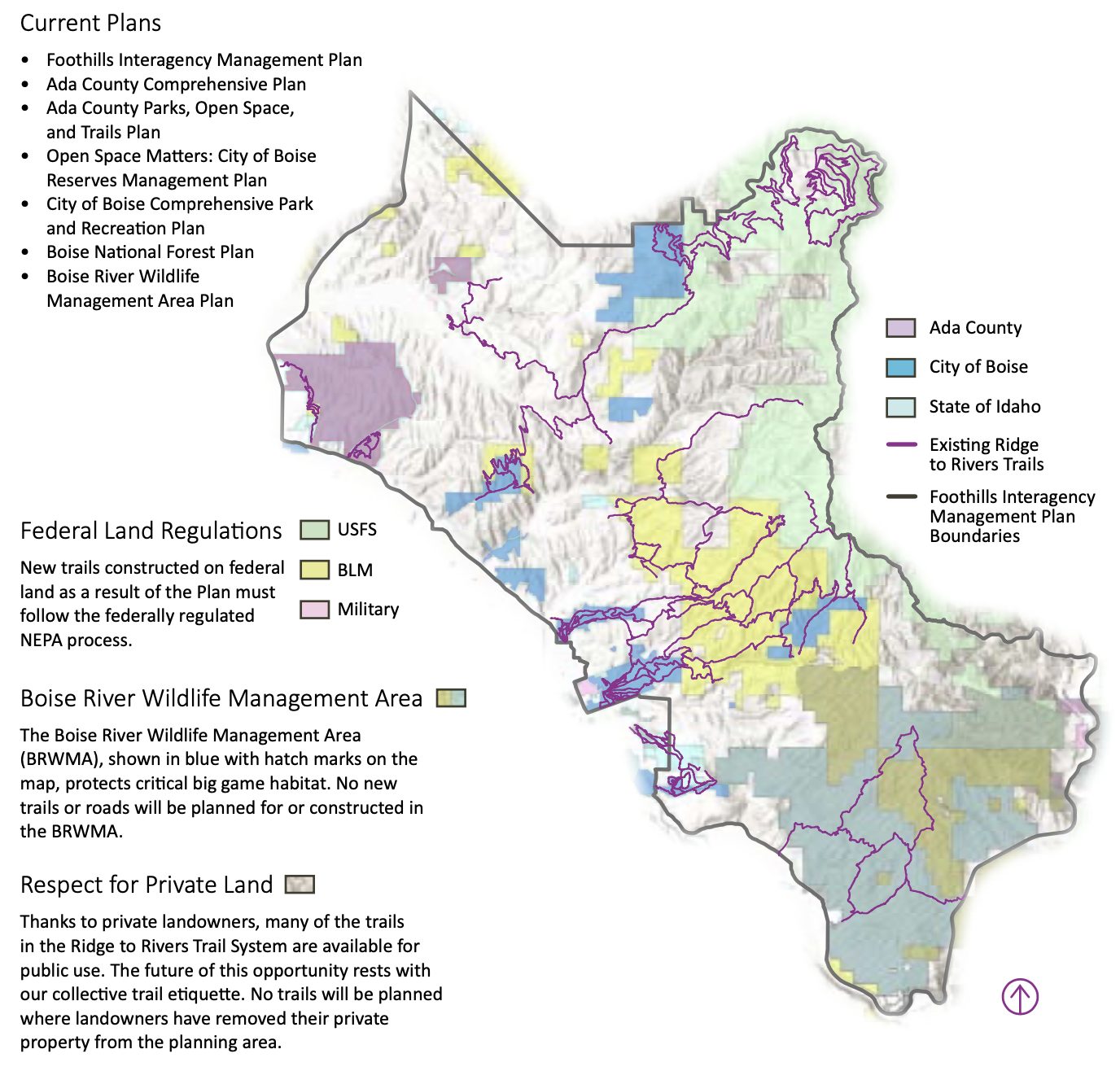
A survey of trail users from 2023 found that around 73% of trail users frequent the Ridge to Rivers system between one and five times per week. Previous estimates put the number of people using the trail system at least once per month at over 78,000 people. The 2016 Ridge to Rivers 10-year plan stated that “Almost 75 percent of the Foothills have soils that are very limited in suitability for recreational uses…Careful management and a higher degree of maintenance than would be required in a different environment allows the Ridge to Rivers system to strive for sustainability despite these soil conditions.” Gordon said that although there was some initial concern about the extra usage the Trails Challenge represents, in the long run the event may help spread users out because it pushes participants to go to areas they may not normally go to.
The fastest finishers of the Trails Challenge usually take two to four days to finish. These herculean efforts usually involve back-to-back high mileage days, with a decent portion done in the dark. On the other end of the finishers list, many participants take all month to finish the challenge, opting for smaller rides every day of the month.
Kelsey Webster is a two-time finisher of the Trails Challenge and was the fourth woman to finish in 2022. “I had no idea that finishing it in five days would be an option to podium. Once I started seeing the stats and realized this was an opportunity for me, I got more hyped to finish it quicker,” Webster said. After finishing the challenge in nine days in 2020, Webster wanted to see if she could go faster. She said that during the Trails Challenge, she puts in days that are far bigger than anything she would do on a normal ride. “You can do that stuff if you just put your head down and do it,” she said, adding that finding your personal grit is among her favorite aspects of the challenge, along with eating snacks, enjoying both solitude and company and appreciating the beautiful city. “We’re really lucky to have such an extraordinary breadth of trails with such a variety of topography and climate,” Webster said.
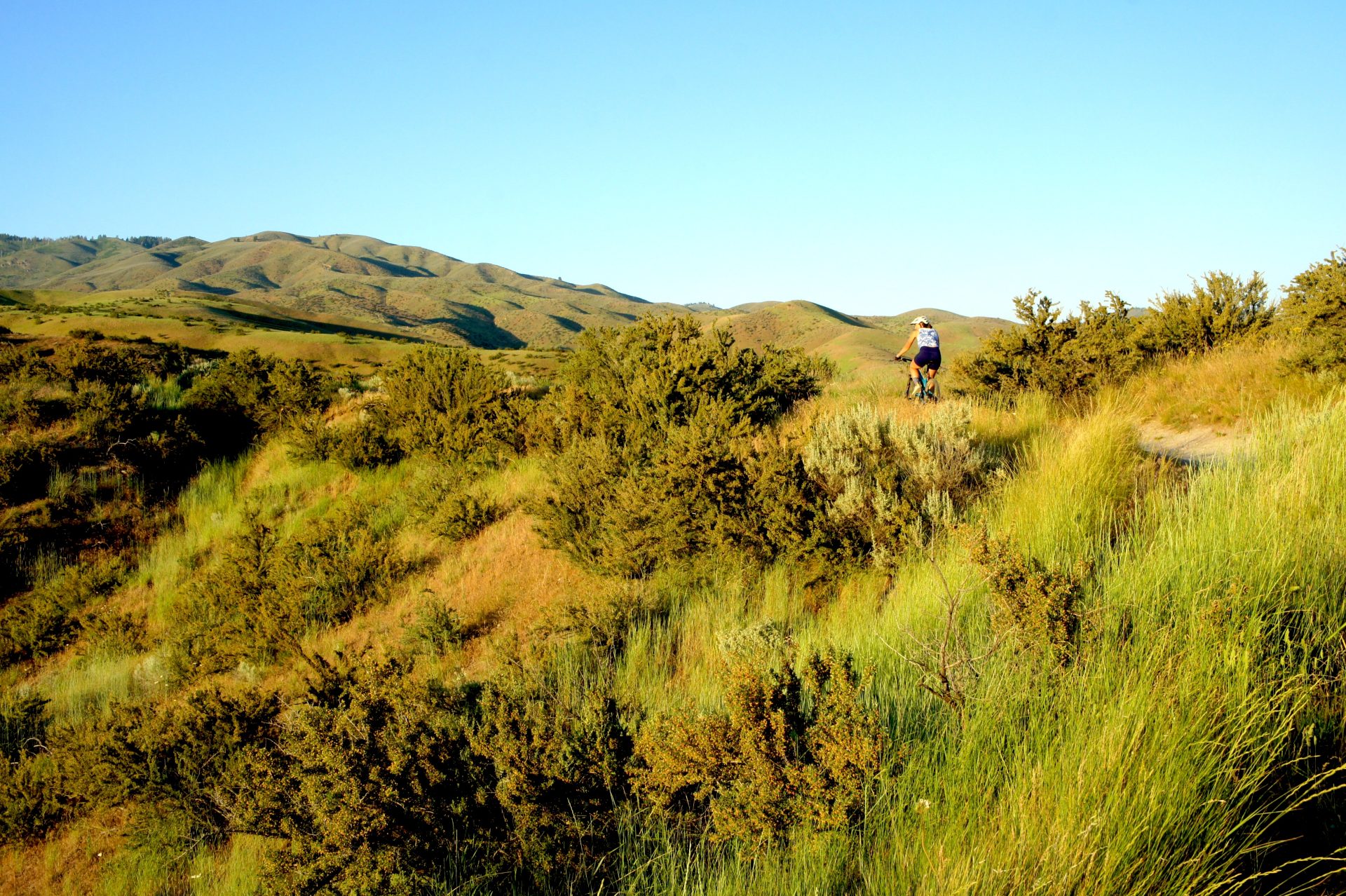
Though the Trails Challenge is not officially a race, it tends to bring out the competitive spirit in many participants. Unlike many other races, participants are likely to never be on the same trail as those close to them on the leaderboard. Webster described this aspect of the Trails Challenge as “whimsical and ethereal in that you’re competing with these people that you never see or might not even know that you see.” Near the end of her effort in 2022, she said she was texting with the other women vying for podium spots discussing strategy on the best way to finish her remaining miles. Even when participants compete for podium spots, camaraderie remains a central part of the Trails Challenge.
Kaylin Zimmer first participated in the Trails Challenge in 2022 after hearing about it from some friends who had finished in previous years. “I thought it would be a good way to explore trails I don’t usually go on and go further than I would normally go,” Zimmer said. That first year, she learned some of the more challenging aspects of the Trails Challenge. “The first year I tried to do it, I missed so many trails that I thought weren’t on there.” In addition to all of the major trails, the Trails Challenge includes a myriad of small connectors and access trails, which are easy to miss in the middle of a ride. Part of the challenge is figuring out how to most effectively string together the 100+ named trails included in the challenge.
Ryan Hager, Zimmer’s partner, had no interest in the Trails Challenge at first. “It seemed like a lot of mountain biking,” he said. But, on the second day of the challenge in 2023, the two of them rode more than 40 miles with almost 6,000 feet of climbing and completed all the trails in Bogus Basin Ski Area and the Stack Rock area. Hager, realizing he had already done a good chunk of the challenge, signed up on his phone while on the side of the trail so he could get credit for his ride that day. Zimmer had also signed up on the side of a trail the day before while riding with some friends doing the challenge. Zimmer would continue to ride or run almost every day, finishing the challenge in three weeks, while Hager mainly focused on big rides on the weekends, leaving him quite a bit of miles to do on the final day of the challenge. Both agreed that putting in big efforts at the start of the challenge while the weather is cooler is a big advantage. Zimmer said their Bogus Basin ride was the biggest mountain bike ride either of them had done up to that point. Many participants find the Trails Challenge pushes them to go after bigger days or harder climbs than they normally would. “You prove to yourself you are more capable than you realize,” she said.
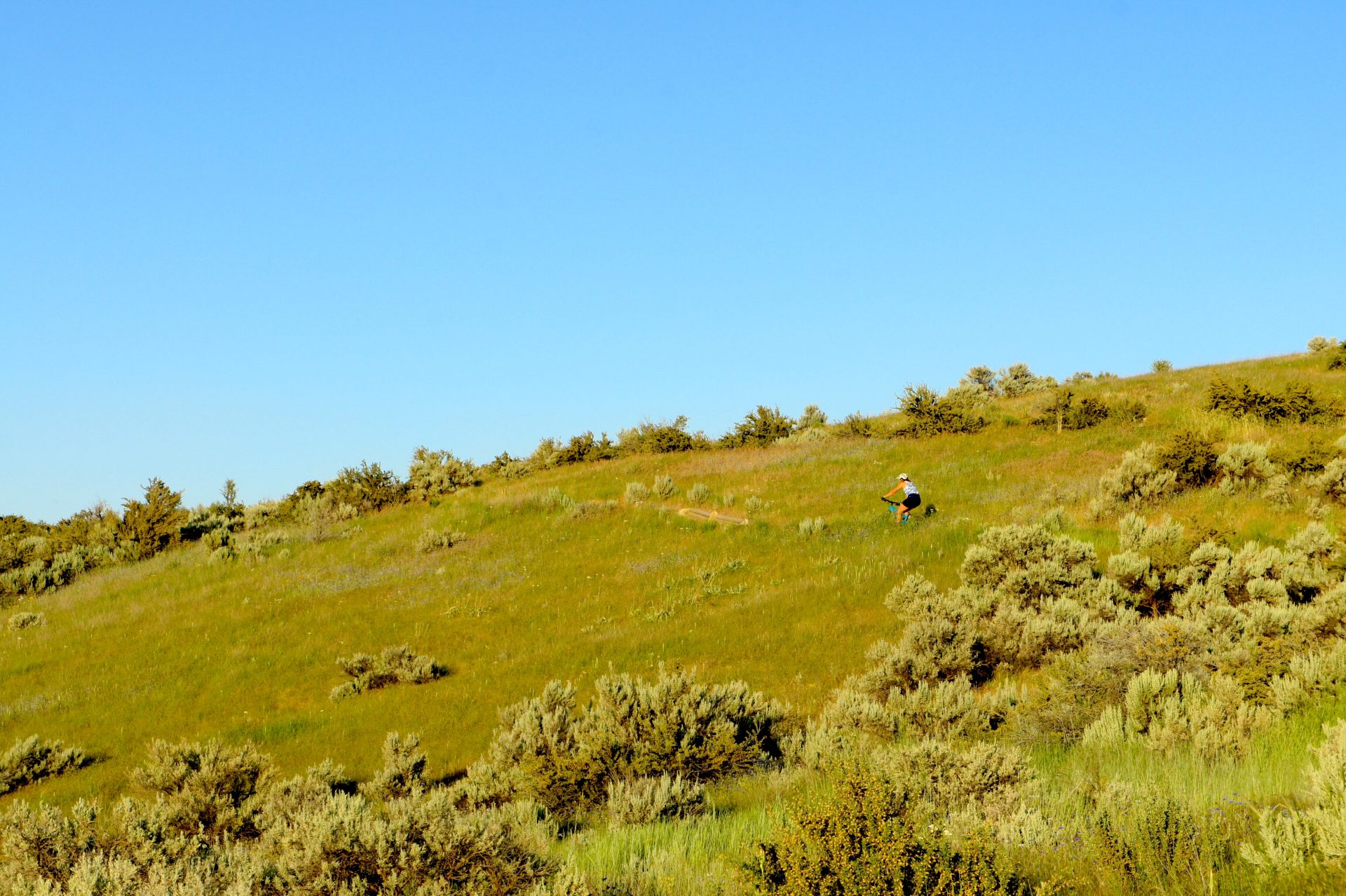
Finding out how much further you can go than you think has always been a part of the Trails Challenge. Kirk Cheney was one of the co-founders of the Boise Trails Challenge back in 2018, following the death of his friend Jason Delgadillo who passed away in a mountain biking accident. “We were getting kind of burned out on doing the same trails over and over, so we would try and do every trail in a month and print out a paper map and mark them off with a highlighter,” Cheney explained. Delgadillo then had the idea of getting someone with digital mapping expertise to build a way to use GPS tracks to log their progress for them, and then the challenge was born. In the first year, only 300 people signed up, but since the third year, over one thousand participants consistently signed up. “During the pandemic, it became evident how unique [the Trails Challenge] was. A lot of other cities reached out to us about how to do it in other places,” he said. At a time when other more conventional biking and running races were canceled, the Trails Challenge represented a way to connect with the broader community while still staying safe.
Cheney said that every year the Trails Challenge can be a struggle to get off the ground. “Every year leading up to it I’m actually not excited to organize it again because I’m busy with my regular job. But what excites me is when I see the positive feedback from it. Because everyone is out there doing their own thing you don’t realize how much it means to people and how many people are out there having really cool experiences.” One new hurdle to clear this year was to try and replace Strava as a way of recording progress. Previously, the Trails Challenge website could connect to Strava and pull participant ride data to automatically check off progress. Recently, Strava has made it harder for events like the Trails Challenge to export data from the site. To overcome this difficulty, Cheney and the other organizers had to develop a way for participants to record their rides directly in the Boise Trails Challenge app.
The Trails Challenge includes five trails that are mandatory climbs, and over the course of the challenge, finishers will do around 36,000 feet of climbing. In the early years of the Trails Challenge, one of these climbs was an ascent of Lucky Peak Road, a steep, chunky, and grueling double-track trail in the eastern end of the Ridge to Rivers management area. “I only did it during the challenge every year. It was not a trail I would ever ride for fun,” Cheney said. As if the Lucky Peak climb was not hard enough, many participants would choose to start the Trails Challenge with the Lucky Peak climb at midnight on the first day of the challenge. Cheney fondly remembers seeing “lights all over the foothills” in the middle of the night. The Lucky Peak climb was removed from the Trails Challenge after a request from Ridge to Rivers to reduce the impact on wildlife in the area.
The seventh year of the Boise Trails Challenge will begin on June 20 this year. Another year is sure to bring many more stories of missed turns, flat tires, brutal climbs in the sun, and long days that give the Trails Challenge its appeal. A celebration of the unique recreational opportunity provided by the Ridge to Rivers system, the Trails Challenge will be sure to deliver thrilling descents, fabulous sunsets, exceeded personal expectations, and treasured memories.
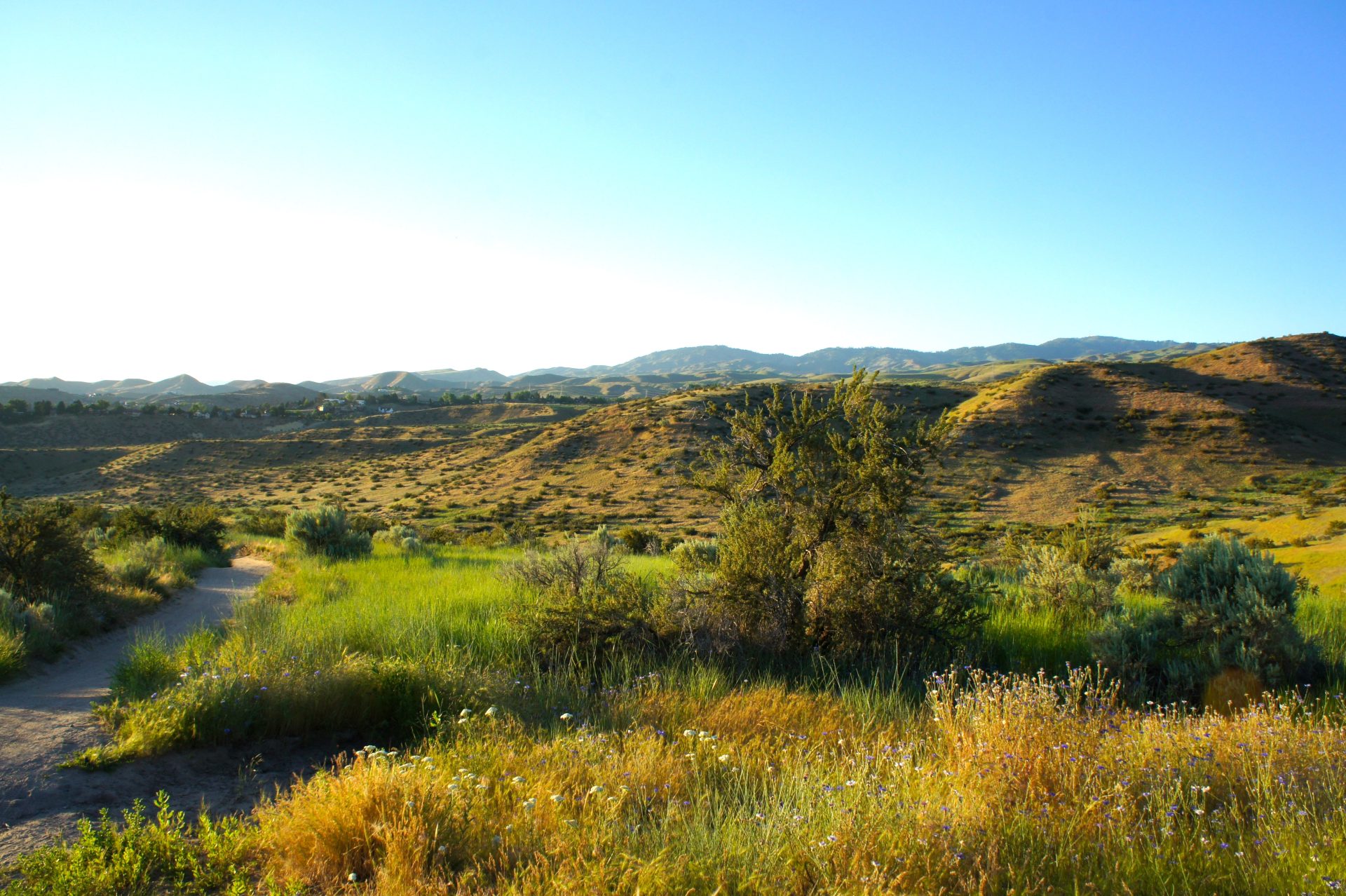
More from Zach Armstrong:
- How Eldora, CO, Ski Patrollers Finally Got Their Union
- How the Fatal GS Bowl Avalanche at Palisades Tahoe, CA, Happened and Why it Could Happen Again
- Public Money Gets Funneled into Massive Deer Valley, UT, Expansion
- Ski Industry Unions Across America Fight For Experienced Staff Retention and Training Incentives